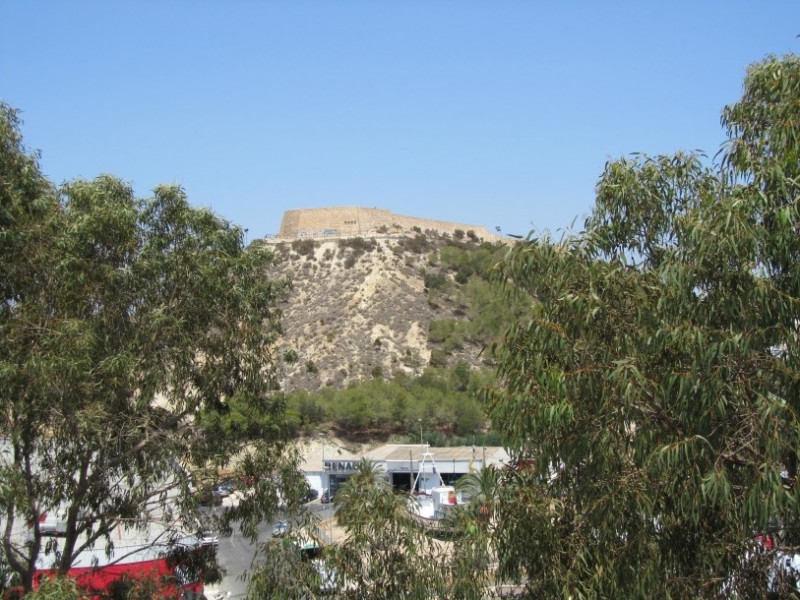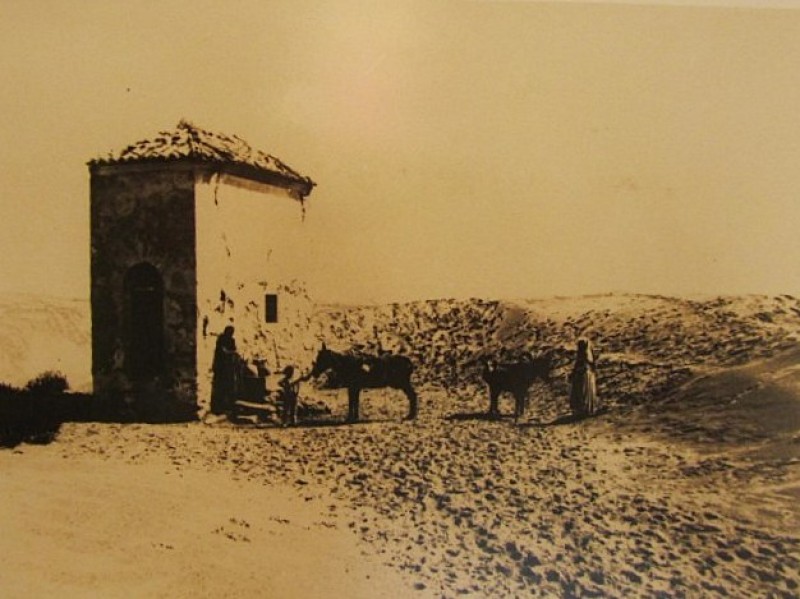
To be listed on the CAMPOSOL TODAY MAP please call +34 968 018 268.
A history of Guardamar del Segura
Humans have settled in the area of Guardamar for thousands of years
The area around the mouth of the River Segura has attracted settlers throughout history and, to our knowledge, in pre-historic times as well, due in large part to the fertile land of the flood plain and the plentiful supplies of seafood. In addition, the hill which stands behind modern-day Guardamar provided a strong position for fortified defences in the Middle Ages, and as a result the history of the town is an amazingly rich one.
Guardamar del Segura before the Reconquista
As is so often the case, in Guardamar del Segura local history is extremely closely connected to geography, and here the beginnings of the town owe everything to its location on a hill at the mouth of the River Segura, close to the sea and to the fertile land of the flood plain which still gives its name to the Vega Baja area of the province of Alicante.
The defensive advantages of the hilltop location have attracted human settlers since pre-historic times, and  remains have been found of a Phoenician port in the dunes and a fortress on the Cabezo de Estaño hill. The most spectacular discovery, though, was made in 1987 on Cabezo Lucero, and is the Dama de Guardamar: this is an Iberian bust dating from around 400 BC, and a copy of it can be seen in the local MAG archaeological museum.
remains have been found of a Phoenician port in the dunes and a fortress on the Cabezo de Estaño hill. The most spectacular discovery, though, was made in 1987 on Cabezo Lucero, and is the Dama de Guardamar: this is an Iberian bust dating from around 400 BC, and a copy of it can be seen in the local MAG archaeological museum.
Later, the presence of the Romans in Guardamar is attested to by the fish salting factory in the dunes near the Playa del Moncayo and fragments of a statue of Mercury on the hill where the castle is located, as well as numerous anchors and amphorae discovered all along this part of the Alicante coast.
The importance of the Moorish settlement in Guardamar in the Early Middle Ages was highlighted by the  discovery in 1897 of an inscribed stone near the remains of the Phoenician town of La Fonteta, in the dunes near the mouth of the River Segura. The text on the stone dates it to the year 944, and further excavations revealed the remains of the Rábita Califal, a Moorish fortress and monastery which was located first in the kingdom of Tudmir and later in Al-Andalus (Andalucía). The work carried out on the site leads historians and archaeologists to conclude that the buildings were occupied until an earthquake partially destroyed it in 1048, despite which it is the only building of its kind yet discovered in Spain and one of the oldest in the western Mediterranean.
discovery in 1897 of an inscribed stone near the remains of the Phoenician town of La Fonteta, in the dunes near the mouth of the River Segura. The text on the stone dates it to the year 944, and further excavations revealed the remains of the Rábita Califal, a Moorish fortress and monastery which was located first in the kingdom of Tudmir and later in Al-Andalus (Andalucía). The work carried out on the site leads historians and archaeologists to conclude that the buildings were occupied until an earthquake partially destroyed it in 1048, despite which it is the only building of its kind yet discovered in Spain and one of the oldest in the western Mediterranean.
Guardamar del Segura in the Middle Ages: a fortified settlement under constant threat of pirate raids
Guardamar was part of the territory reconquered by the Christians in the mid-thirteenth century, and after a Mudéjar uprising in 1264 the remaining Moors were obliged either to convert to Christianity or to leave. In 1277 Alfonso X founded the Christian town of Guardamar as an independent municipality on the site of the castle, and this later passed into the hands of the Kingdoms of Valencia and Castille. The Christians built their walled city on top of the remains of defensive structures left there by previous civilizations.
Reconquered towns were still vulnerable, and in 1331 an incursion by the Moors from Granada ended in the town of Guardamar being sacked. Twenty-eight years later the castle was burnt and the town was subjected to rule by the officials in charge of Orihuela, and this led to a dwindling population who survived on fishing, salt and limited agriculture.
During the first half of the sixteenth century there were a series of Berber pirate raids on the south-eastern  coast of Spain, including Guardamar, and the fortifications in the town were among the many along the shoreline to be reinforced. The castle was later adapted to meet 16th century requirements in order to resist possible artillery bombardments if an alliance were formed between the Moors of northern Africa and those still living in the Valencia area.
coast of Spain, including Guardamar, and the fortifications in the town were among the many along the shoreline to be reinforced. The castle was later adapted to meet 16th century requirements in order to resist possible artillery bombardments if an alliance were formed between the Moors of northern Africa and those still living in the Valencia area.
A stroll around the remaining outside walls of the fortress nowadays makes it hard to imagine that at that point, some 500 years ago, there were 120 houses within the castle walls of medieval Guardamar!
This was the period in which the Baluarte de la Pólvora was remodeled in the tower, and at the same time the watchtowers along the coast, including those in Torrevieja, La Torre de la Horadada and Santa Pola were strengthened. Despite these defences, though, the coastal fringe suffered frequent raids, and many people moved away from the area, eventually leaving Guardamar as little more than a semi-forgotten outpost which was no larger than a village in terms of population. In theory it came under the authority of the officials in Orihuela, but in practice enjoyed a kind of semi-independence which was probably due to neglect more than any other factor!
In 1648 the remaining population was decimated by an outbreak of bubonic plague, and when it avoided another epidemic in 1678 this was attributed to San Roque: the saint’s feast day was celebrated in Guardamar every year thereafter.
The main local event in the 17th century, though, was on 29th August 1692, when Guardamar del Segura was awarded the status of Villa Real (royal borough) by Carlos II in return for a generous donation to the royal coffers. This reflects the resilience of the population to the hardships of the previous decades, and the boundaries of the new borough were far larger than today, including modern-day Rojales, San Fulgencio and part of Dolores and Benijófar.
During the War of the Spanish Succession Guardamar remained faithful to the cause of Felipe V, despite the threat posed by the army of the Marqués de Rafal, who supported Charles of Austria from his base in Orihuela. In fact the town was sacked by the Carlists on 23rd August 1707, but in return for the support given the victorious Felipe eventually added the word “Leal” to the official status of Guardamar, and pardoned the residents all tax payments for a period of four years.
The 18th century in Guardamar del Segura
Increased agriculture marks the steady growth of Guardamar del Segura
During the 18th century the parish church was built and the town began to prosper and extend beyond the castle walls. The borough lost land near the coast when it was ceded to Cardinal Belluga in 1720 in return for an annual payment, but kept the areas now known as Marjal, Río Seco and El Ginebral, which were later converted into arable farming land. The rectilinear paths and irrigation ditches which still dominate in these areas date back to this period.
Rojales achieved administrative independence in 1773, but despite this the population of Guardamar was increasing, and reached 2,349 by 1787: as a result more and more of the surrounding landscape was adapted from uncared-for pasture land to dry crop farming. The produce of Guardamar included olives, silk from silkworms, pomegranates, oranges, lemons, wheat, barley, corn, leaf vegetables, red peppers (“ñoras”) and saltwort, and eels were fished from the river.
 The town was administered by a team of eleven officials, and municipal services included two schoolmasters (for boys and girls), a doctor, a surgeon, a midwife and a beadle.
The town was administered by a team of eleven officials, and municipal services included two schoolmasters (for boys and girls), a doctor, a surgeon, a midwife and a beadle.
Records also testify to the existence of the old mill by the weir and a stone bridge on the site where the more recent iron structure now stands, and large boats made their way up what is now nothing more than a backwater of the Segura due to the re-routing of the river.
The 1829 earthquake and reconstruction
After a disastrous start the 19th century in Guardamar del Segura became a period of prosperity
The early years of the 19th century were ones of hardship. Firstly, the town was on constant alert for a possible landing by Napoleonic troops during the Peninsular War, and after a misguided attempt in 1826 to re-instate the 1812 Constitution on the beaches of Guardamar full-scale disaster struck in March 1829.
This was the date of the Torrevieja earthquake, which largely destroyed not only the town after which it has subsequently been named but also Guardamar, Orihuela, Almoradí, Benejúzar, Rafal, Rojales, San Bartolomé, Torrelamata, Dolores, Benijófar, San Fulgencio, Formentera, Daya Nueva, Daya Vieja, La Puebla, San Miguel de Salinas and many rural houses and settlements. In Guardamar the buildings destroyed were 557 houses, four places of worship including the main parish church, the castle, two flour mills, two granaries and three olive oil presses, although in fact most of the damage here was done by the after-shock which occurred two days after the first quake on 23rd March. This meant that the population were forewarned, and only eight died in Guardamar, although 3,000 locals were left homeless.
On hearing of the disaster Fernando VII sent the engineer Agustín de Larramendi to assess the damage, and in the following years he drew up a reconstruction plan which formed the basis of Guardamar del Segura as we find it today, based on the central axis of the Calle Mayor and the Avenida del País Valenciano. 560 single-storey houses were built on tree-lined streets, and the new church was on the central square in the Plaza Mayor. The population slowly grew again, and the rest of the century passed in relative peace.
The 20th century and the modern era in Guardamar del Segura
The threat from sand dunes is avoided and tourism becomes the main industry in Guardamar del Segura
By the end of the 19th century, though, the implacable movement of the dunes to the north-east of the town was threatening to engulf Guardamar del Segura, and in 1896 another engineer, Francisco Mira y Botella,  came to supervise the re-planting of trees to stabilize them. This mammoth task kept most of the population in employment for the following twenty years, and striking photographs of these years are now on display in the same building as the modern-day tourist office, where Engineer Mira used to live.
came to supervise the re-planting of trees to stabilize them. This mammoth task kept most of the population in employment for the following twenty years, and striking photographs of these years are now on display in the same building as the modern-day tourist office, where Engineer Mira used to live.
The re-planting included not only pine trees, palms and eucalyptus, but also smaller plant species, and the result can be seen in the dunes which still constitute the Parque Alfonso XIII today as the plants have survived on the sandy terrain even during subsequent periods of drought.
With the survival of Guardamar guaranteed, the early twentieth century also saw the re-routing of the River Segura and the introduction of electricity as the industrial age belatedly reached this part of Spain. The culmination of this process was the visit of King Alfonso XIII himself on 31st January 1923.
In the pre-historic era Guardamar was repeatedly colonized by foreign invaders, and in the 1920s, when the population was around 2,800, another “invasion” started as the first tourists began to appear in what later became known as the Costa Blanca. Holiday chalets began to spring up along the beach, and although they were not often used (long holidays were far from institutionalized in those days) this was when the Casas de Babilonia were built on the stretch of beach which now goes by the same name.
Guardamar was fortunate to pass a relatively quiet Civil War between 1936 and 1939, although coastal fortifications were installed with trenches being dug along the beaches and a machine-gun nest being built on the Playa de la Roqueta. No blood is known to have been shed here, but these were years of considerable hardship and scarcity of foodstuffs, and economic and demographic stagnation continued to mark the post-war years.
In the 1950s and 60s the modern tourism boom began, firstly with the construction of holiday homes for residents of Madrid, Murcia and other cities in Spain, and later with the arrival of visitors from abroad. The population has quadrupled in size over the last forty years to over 17,000 – around 40% of them non-Spaniards, including over 2,000 Britons - and in the early 21st century it is possible to hear on the streets of Guardamar del Segura a bewildering variety of foreign languages and accents from all over Europe.
This cosmopolitan nature somehow does justice to the wealth of different cultures which have populated Guardamar del Segura over the last three millennia, and testifies that modern residential tourists are attracted by the privileged location of the town just as strongly as were the Phoenicians and the Romans, although for different reasons!
For more local information, news and events consult the Guardamar del Segura section of Alicante Today.

































